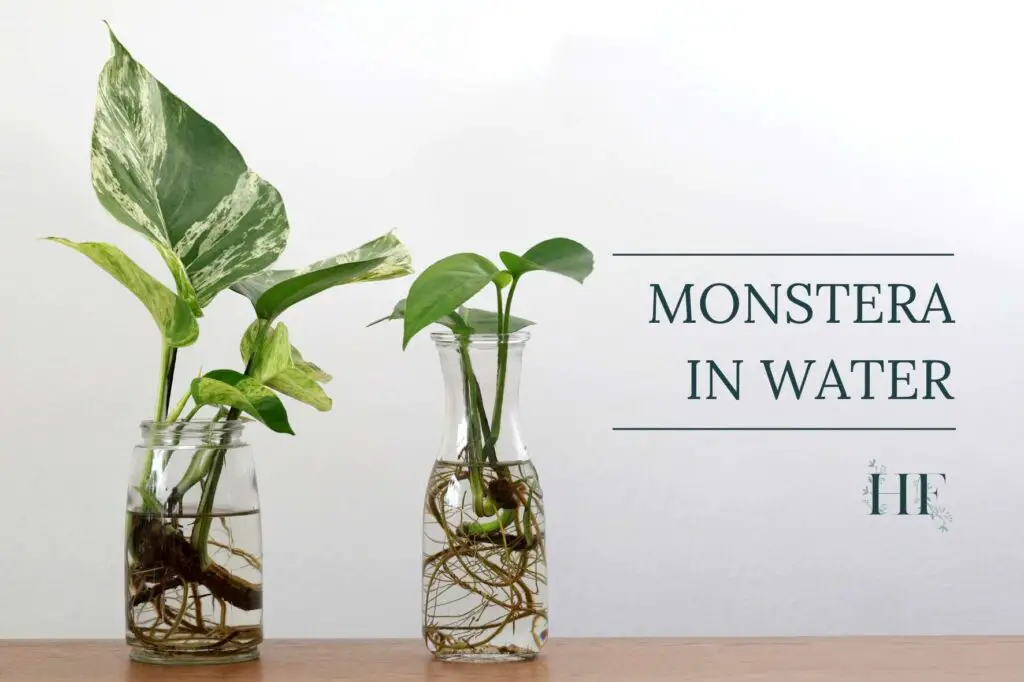You might be familiar with propagating a Monstera cutting in water, but have you ever wondered if you can grow Monstera in water? And for how long?
In the Monstera propagation blog post, I covered propagating your Monstera in water and when to move monstera from water to soil. However, what would happen if you leave your Monstera in water indefinitely?
Let’s look at the considerations for growing Monstera in water. Also, the ideal conditions to make sure your water-grown Monstera can thrive.
Monstera in Water FAQ
Can a Monstera Live in Water?
A Monstera can live in water for a long time, as long as it has a node. But it will never reach its potential in size or health unless it is eventually moved into soil.
Although you might have heard about people growing Monstera Deliciosa cuttings in water for years, there are limits to what you can realistically expect if you grow the plant this way.
Basically, a Monstera left in water will survive, but it won’t thrive in this environment since it’s not its natural medium.
Monsteras are not aquatic plants, so keeping them in water forces them to adapt to circumstances they wouldn’t find in the wild (a.k.a.their natural habitat).
However, if you are planning on keeping your Monstera cutting in water until it is ready to be planted in soil, that’s a different scenario altogether since the Monstera will only be temporarily living in water.
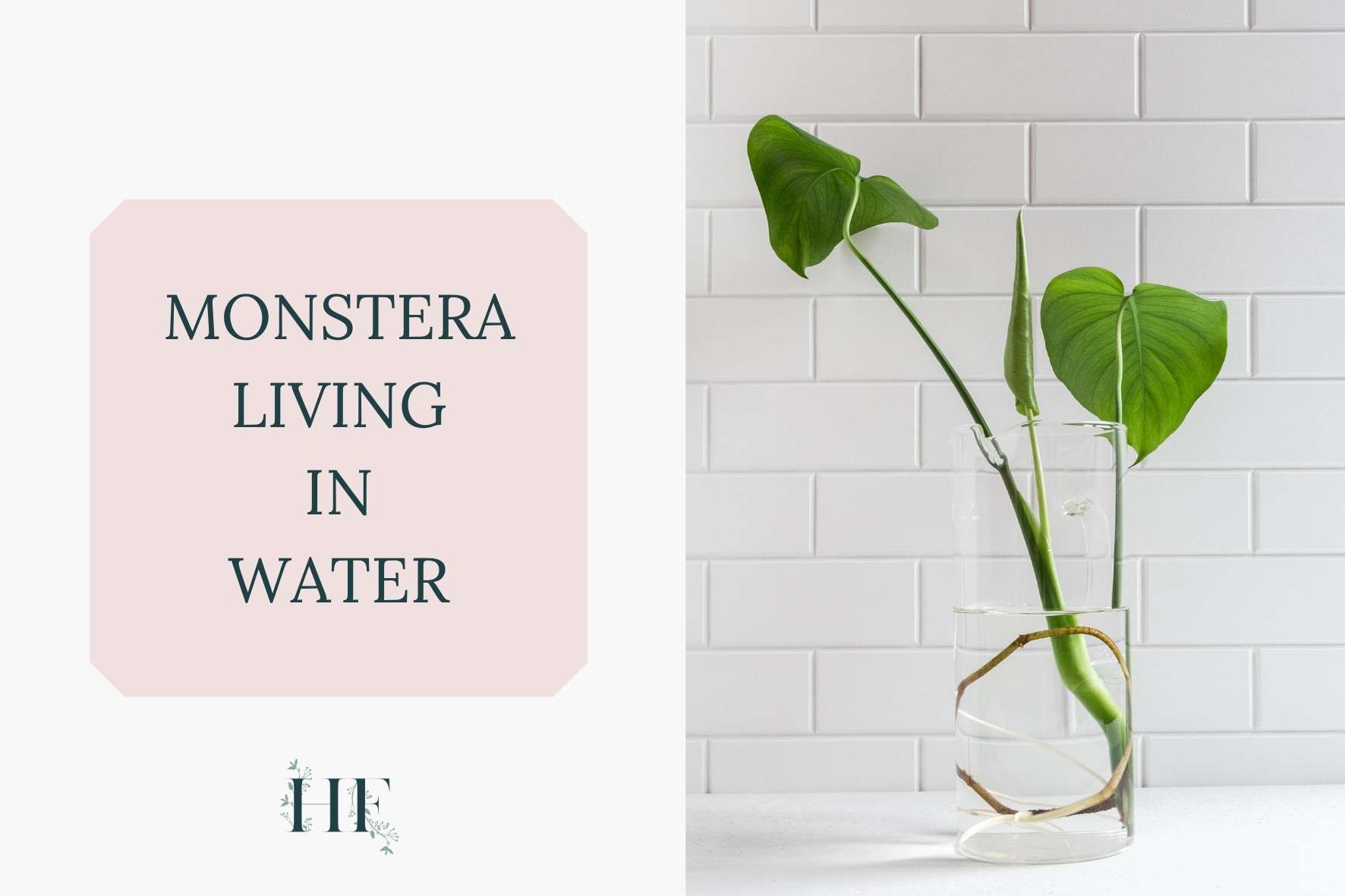
Can You Grow Monstera in Water?
Monstera can grow in soft water that is replaced at least once a week. Also, rinsing the roots will prevent any bacterial development and using liquid hydroponic fertiliser will promote growth.
For the Monstera cutting to grow in water, it needs a node. All growth (stems, leaves, aerial roots) originates from the node.
Usually, a Monstera cutting should be growing roots after 3 to 5 weeks. Some cuttings start their root development after one or two weeks, but it can take longer in other cases.
As the plant continues to grow, new leaves will sprout. Eventually, for each new leaf, an older leaf will drop. So, even though it generates new growth, the Monstera plant basically stays the same size.
So, why grow your Monstera in water?
Pros & Cons of Growing Monsteras in Water
There are some houseplant owners who have decided to permanently grow Monstera Deliciosa (and other tropical plants) in water.
Here are the advantages and disadvantages of growing a Monstera in water:
Advantages of Leaving Monteras Growing in Water
- Reduced chance of pests: There’s no organic matter in the medium (i.e., soil) to introduce diseases like fungus gnats (a very common houseplant pest) and mould. Also, it’s easier to get rid of spider mites and aphids since you can wash the plant by placing it under the tap (without worrying about overwatering).
- No soil at home: For people whose pets like to dig in their potted plants, this can be a significant benefit. Others just find the idea of having “dirt” inside their home unpleasant and are much more comfortable with water. Not only is it less messy, but it’s also cheaper to grow plants in water.
- Avoid overwatering: If your main issue with houseplants is watering too much, by growing your Monstera in water you won’t need to worry about overwatering it. It may seem counterintuitive, but Monsteras that live in water will grow water roots (different to soil roots). These water roots are designed to absorb the right amount of moisture.
- Monitor root health easily: When using a clear vase, the roots are visible as they grow, so it is much easier to track each cutting’s progress as it develops and check the cuttings for signs of rot. You can remove any damaged or rotted roots right away.
- Easy to care for: Keeping the Monstera cutting in fresh, high-quality water, giving it plenty of sunlight and fertilising it accordingly is enough to keep it alive and growing. Also, for frequent travellers, it’s easier for a friend or family member to take care of plants that grow in water. It’s much easier for those people to replace or top up a container of water than it is to understand moisture levels and each plant’s individual needs.
- Attractive display: In addition to easier plant care, it’s also an attractive and unique way to display your plants. The best type of vase to keep a Monstera cutting is a wide enough cylinder vase that is made of clear glass. I like to use a long cylinder glass vase that has a wide enough diameter to accommodate the cutting (with its aerial roots), allowing the space for the new roots to grow and also keeping the stem upright.
Disadvantages of Leaving Monsteras Growing in Water
- Limited growth: Monsteras kept in water do not grow as large as those grown in potting soil. If you have limited space, this might be an advantage. However, if you want a full-size Monstera, you will have to transplant it into a pot with soil after a while.
- No soil to provide nutrients: Over time, a Monstera growing in water will become deficient in some of the nutrients that can be found in soil. You will have to supplement them using a special fertiliser for hydroponics.
- Water quality and pH considerations: Rainwater or filtered water are the best types of water to use since they don’t contain chlorine or other substances that can damage the cutting. Avoid tap water unless you live in an area with high-quality tap water. Also, if the water pH is off, your Monstera will have trouble absorbing nutrients.
- Algae growth: Algae growth is inevitable. Although it’s not harmful to the plant (it’s actually a sign of healthy water), some people find algae unsightly. You can use an opaque vase instead of a clear one to avoid seeing it.
- Slimy Monstera roots: To keep your Monstera healthy, you need to change the water on a weekly basis. If you forget to do so, your Monstera may develop slimy roots. This is the result of bacterial growth.
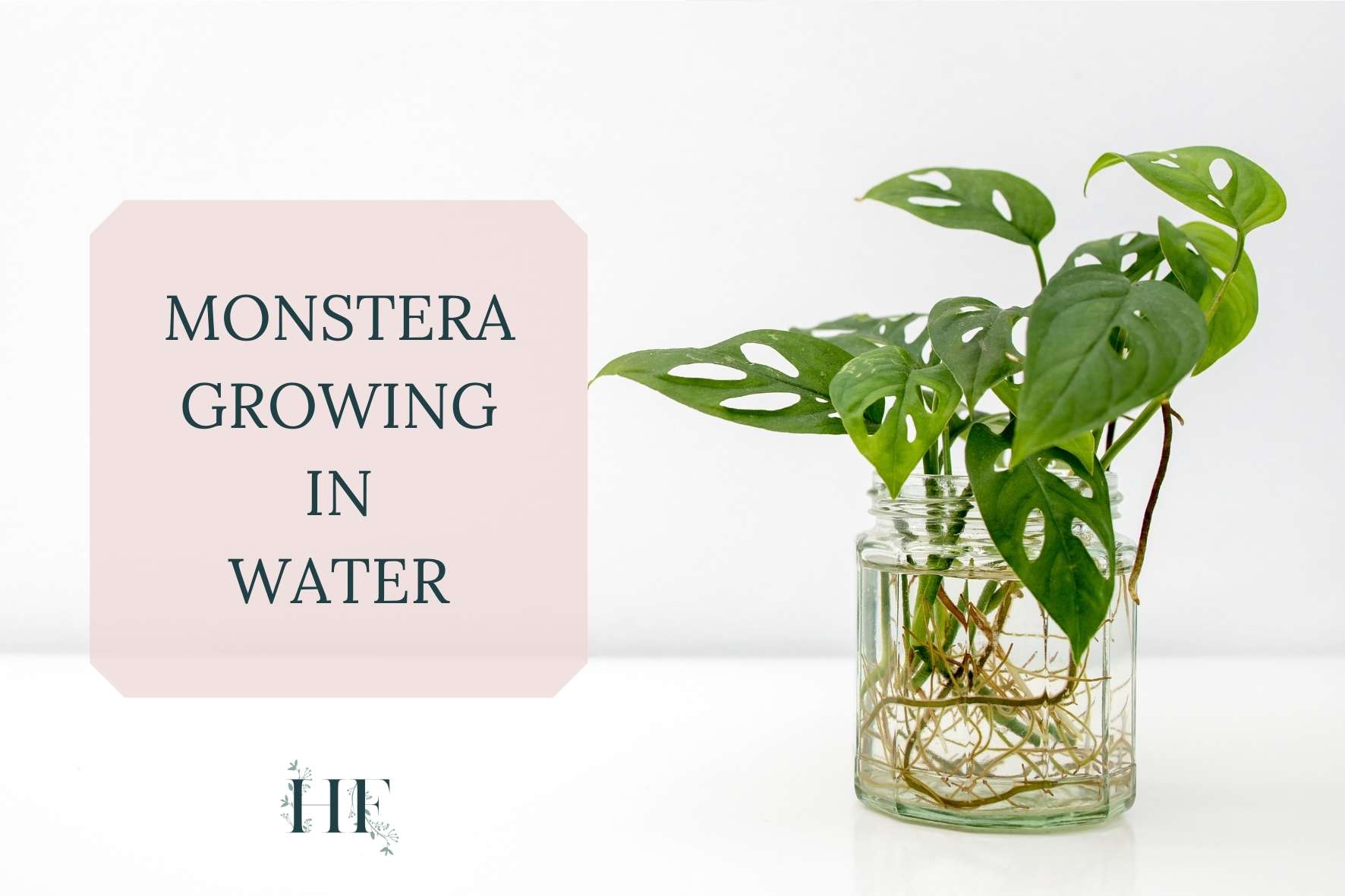
Can Monstera Grow Roots in Water?
On average, a Monstera cutting should be growing water roots after 3 to 5 weeks of being propagated in water.
Once it grows a full set of roots, you have a rooted Monstera cutting.
The first root that grows will be a single white, opaque, fuzzy root, coming out of the stem. Once it’s long enough (around 1 inch long), it will start to produce little feeder roots coming out the sides. These fuzzy roots will absorb moisture for your Monstera.
Roots that grow in water are different from those that grow in soil. This means water roots don’t absorb nutrients and oxygen the same way that soil roots do.
How Long Can a Monstera Stay or Live in Water?
It’s difficult to pinpoint exactly how long a Monstera can survive in water since many owners might choose to pot the cutting before losing it.
As an orientation timeline, it seems that most Monstera cuttings start to show signs of stress after 2 or 3 years in water.
How Long Will Monstera Leaves Last in Water (Without a Node)?
A Monstera leaf cutting can survive without a node for a few weeks. However, expect no new leaf growth. A Monstera cutting without a node will only grow roots.
Florists often use Monstera leaves in arrangements and they tend to last longer than other flowers.
Eventually, roots will emerge at the base of the stem, which leads people to wonder if they can grow a whole new Monstera plant from just a leaf stem. Unfortunately, unless the stem cutting has a node, it’s not possible to grow a new plant.
Changing the water every couple of days will help the leaf stay healthy for longer, but eventually, a Monstera leaf without a node will die.
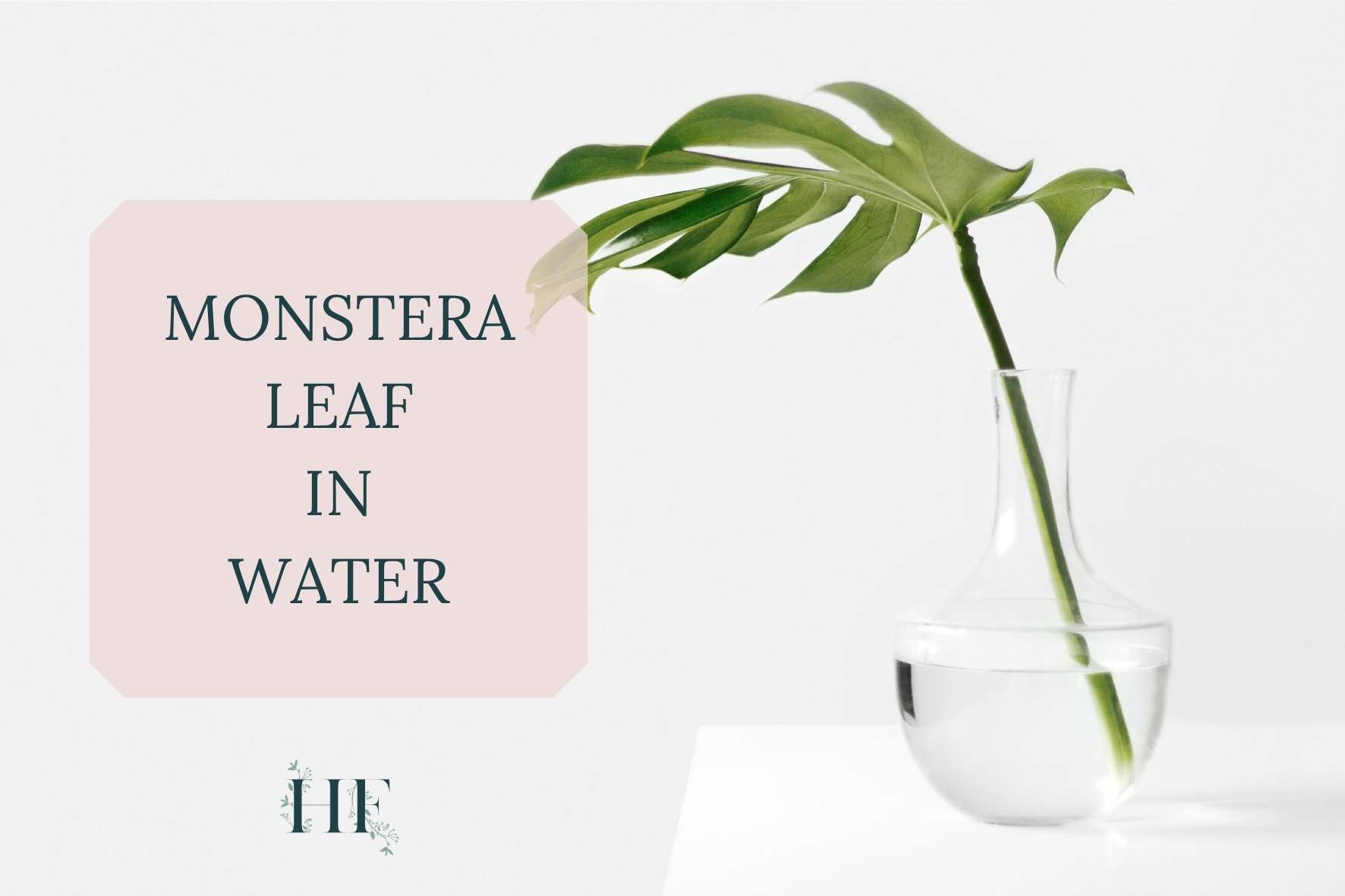
Should I Grow a Monstera in Water Permanently?
There’s no right or wrong answer. Growing a Monstera in water permanently depends on your unique situation and perspective. A perfect option for one person might not be right for another.
If you keep your Monstera in water and find out that it’s not working out for you, or it starts to look unhealthy, you can transplant it into soil.
For a step to step guide on how to do this, check my Monstera Propagation in Soil, Water and more! blog post.
When to Move Monstera from Water to Soil?
When there is a nice cluster of thick white roots filling up the vase, the Monstera cutting is ready to be planted in soil. As long as you have around 5 roots that are several inches long, you can plant your Monstera cutting.
Also, take into account that a tall cutting with several leaves should have more roots to support it than a smaller cutting with only a single leaf.
Usually, it can take about 6 weeks for roots to develop on your Monstera cutting before you move it into the soil. You can also wait until 5 or more roots have grown and they are at least 6 inches long.
If unsure, you can wait between 2 to 3 months to ensure a solid root system has formed for a better chance of survival.
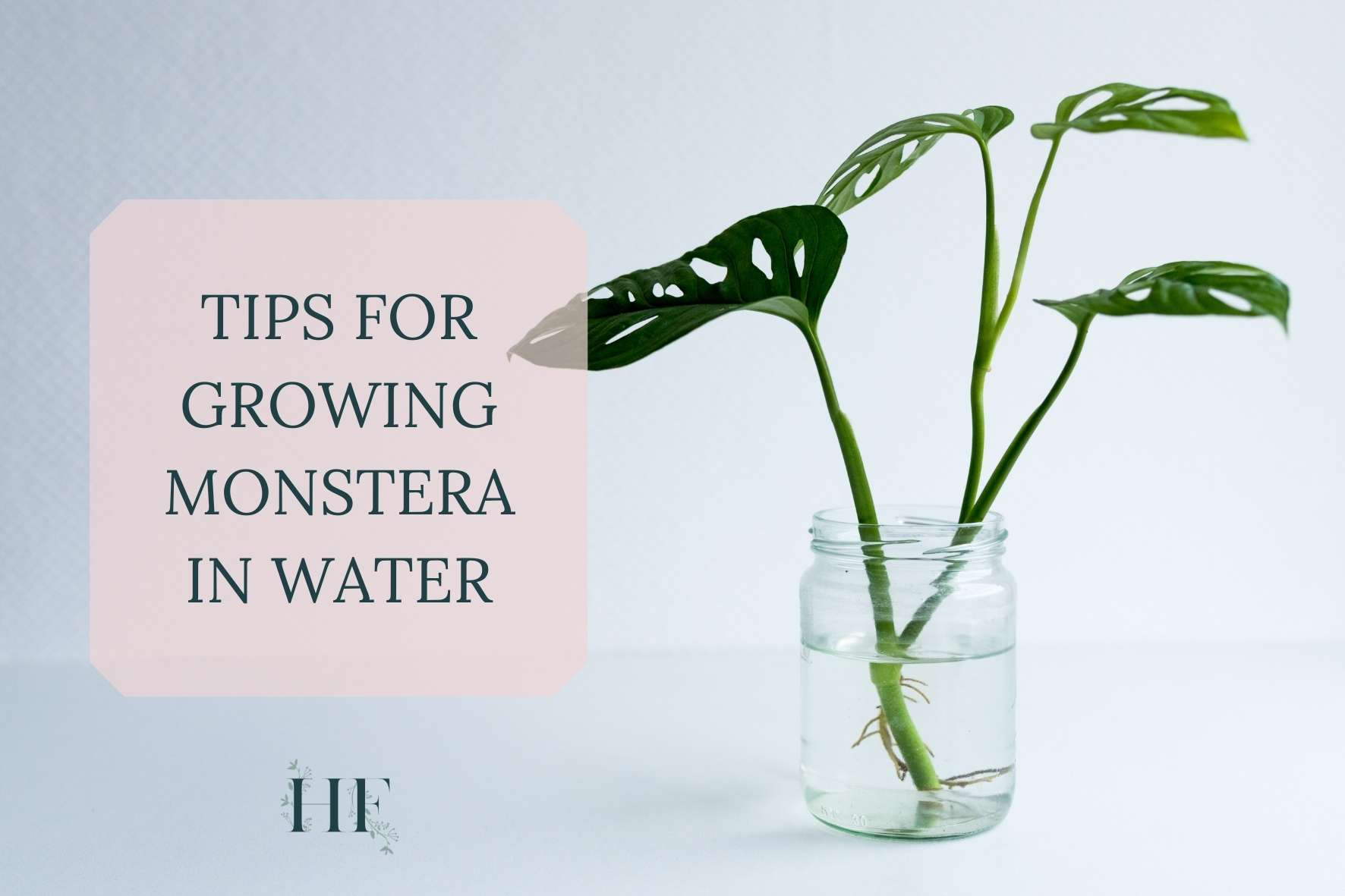
Tips for Growing a Monstera in Water
Here are some tips on how to grow Monstera in water:
1) Provide Indirect Light and Warm Temperature
Place the vase with the Monstera cutting in an area with bright, indirect light (avoid direct sunlight). The sunnier the location, i.e. the longer the cutting receives light, the quicker the cutting will root.
Remember that direct sunlight can burn both leaves and roots, quickly killing these delicate cuttings.
If the cutting is not getting enough light, you can always supplement it by using a grow light (a full spectrum one, like this one).
Also, avoid cold drafts, places near air conditioning vents or those that emit heat.
Finally, maintain a warm temperature indoors, Monstera’s prefer a temperature between 20 to 30 °C (68–86 °F).
2) Change the Monstera’s Water Once a Week
Change the Monstera water at least once a week to keep the cutting healthy and in optimal growing conditions.
The only source of oxygen is what is dissolved in water and it will be depleted over time. Changing the water often helps ensure that there is enough oxygen in the water for the plant to absorb.
What Type of Water is Best for Monsteras?
Rainwater is the best type of water for Monsteras for many reasons:
- It already contains nutrients.
- It naturally imparts nitrogen to your plants in a form that is easy for them to absorb.
- It’s slightly acidic, which most plants prefer.
- Rainwater is far less likely than tap water to contain chemicals (including chlorine) that can damage the cutting.
If you do not have access to rainwater, spring water and filtered water are also good options.
Avoid tap water unless you live in an area with high-quality tap water. If you have hard water, the excess buildup of minerals can prevent the plant’s root system from absorbing enough oxygen.
If you only have access to tap water, leaving it to sit out overnight can allow some of the chlorine to evaporate before you use it.
3) Clean The Roots When Changing the Water
When changing water, you should also rinse your Monstera’s roots under a strong water stream. This allows you to remove any lingering rotting plant matter and discourages bacterial growth.
You can use an old toothbrush to gently scrub the Monstera roots if the algae do not come off by rinsing, for instance.
When placing the cutting back into the vase, make sure it stays upright, and fill with water until the aerial roots and end of the cutting are completely covered. Try to make sure the cutting is suspended and not squished into the side or bottom of the vase, as this increases the chance of rot.
4) Address Monstera Root Rot and Other Issues
If you ever notice black, soft or slimy roots in your Monstera cutting, prune them off immediately to stop root rot from spreading further.
Here’s how to clean Monstera roots that have root rot:
- First, remove the plant from the vase and rinse all roots thoroughly under a strong stream of water.
- Next, trim off any dead or damaged roots.
- Then, wash the remaining roots with a 3% hydrogen peroxide solution to kill any remaining bacteria.
- Afterwards, rinse them with fresh water.
- Finally, disinfect the vase (I use white vinegar for this), rinse it and fill it with fresh clean water.
Read also: Monstera Root Rot Signs, Causes and Recovery Tips.
5) Use a Hydroponics Fertiliser to Prevent Nutrient Deficiency
A Monstera growing in water has less access to nutrients than one growing in potting soil.
When Monsteras are growing in water, you need to provide them with the micronutrients that they usually get from the soil and macronutrients that they get from a traditional fertiliser.
A Monstera in water needs a hydroponics fertiliser to make sure that it gets the proper balance of nutrients needed.
When Monsteras grow in potting soil, they absorb nutrients from organic matter in the soil. But, when Monsteras grow in water, using a fertiliser designed for soil will cause the plant to lack nutrients in certain areas while overloading them in others.
That’s why I recommend using this hydroponics fertiliser. Be sure to follow the instructions on the label carefully to avoid an overdose, which can damage your plant.
Insider Tip: If you are planning on moving your Monstera cutting into soil once it has a good root system, then it’s not necessary to use a fertiliser. Hydroponic fertiliser is only suggested for Monsteras that will be kept in water permanently.
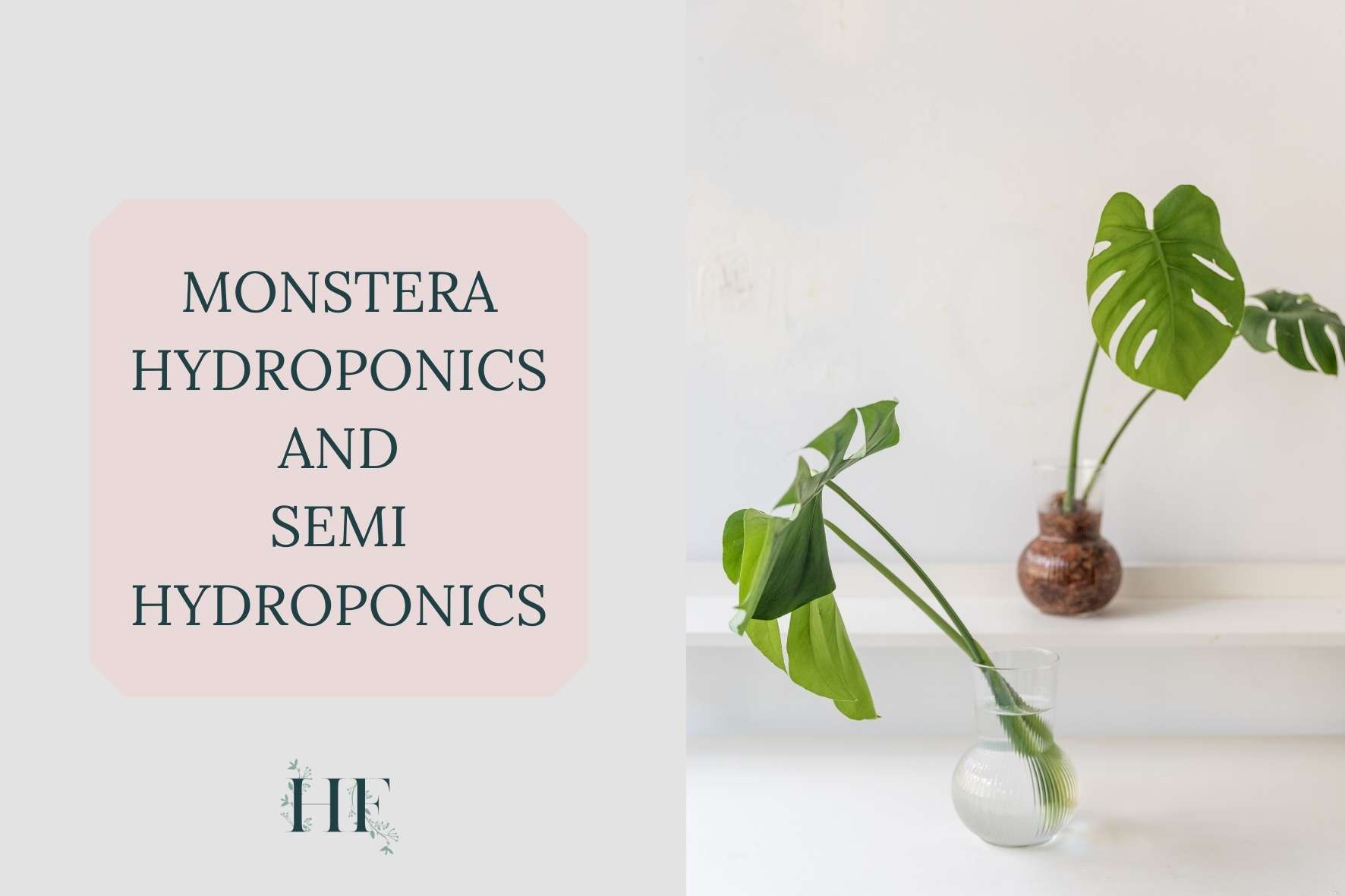
Monstera Hydroponics
You can also grow Monstera plants with hydroponics.
Hydroponics describes any method of growing plants without soil. This might mean that the plant grows in water or in another non-organic medium such as clay LECA balls (referred to as semi hydroponics).
You probably know that you can propagate a Monstera in water and let it grow roots. This is considered hydroponics too.
Have you grown a Monstera in water? Let us know in the comments!

